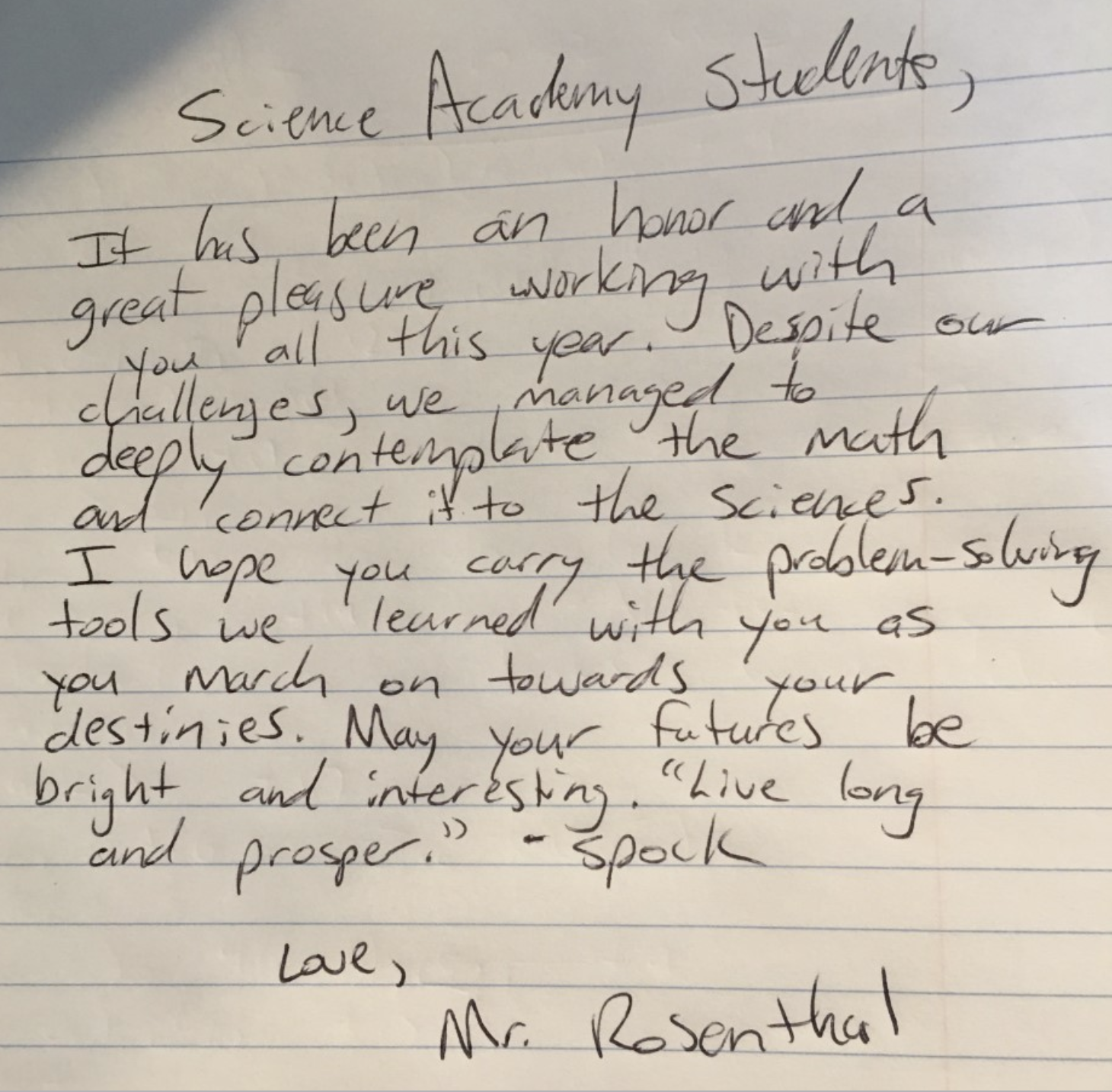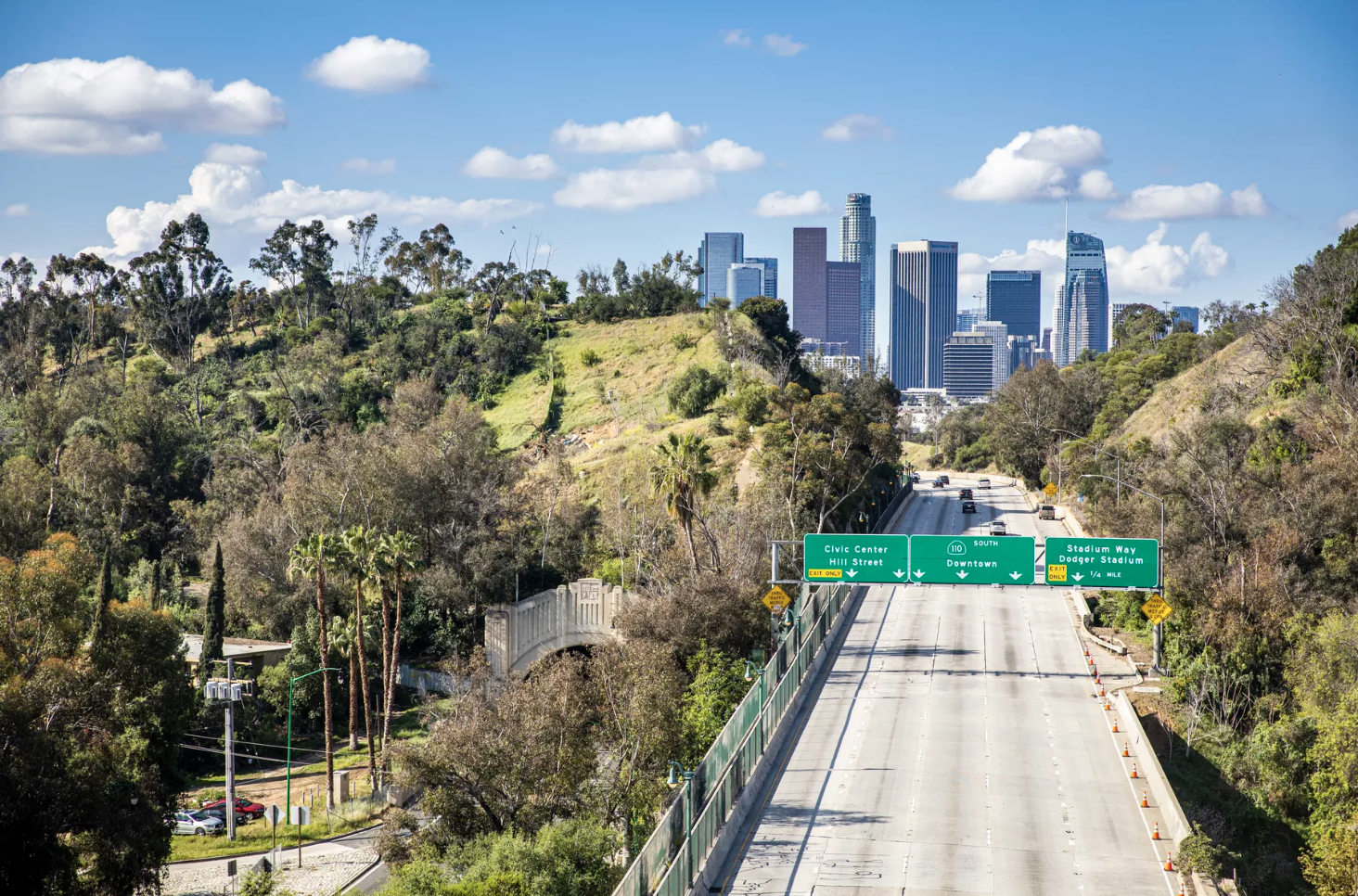
The Environment and the Effects of COVID-19
by Allen Choi and Payton Suh
Although the Coronavirus has brought shutdown to many parts of the world, many things, both good and bad, have happened to our Earth due to a decrease in human activity. Ever since we have been in lockdown, the Earth has been changing slowly in many ways. From CO2 emissions to the ozone layer, quarantine may be bringing a positive effect on the environment.
The Los Angeles Air Quality
The Coronavirus has brought many surprises, such as the sudden decrease in pollution in Los Angeles. From mid-March to early April 2020, one of the most polluted municipalities in the world had a sudden streak in good air quality. Studies show that Los Angeles air quality hasn’t been so good since 1980, over 40 years ago. The average bad air quality in Los Angeles was cut down by 20%. Researchers also found a drop of 40% in PM 2.5, which is a group of microscopic pollutants that can cause serious issues with respiratory and cardiovascular functions. PM 2.5 gets into the air through many sources; in Los Angeles, this mainly happens because of vehicle traffic. Since quarantine has encouraged people to stay at home, traffic has been reduced, which is why PM 2.5 levels have decreased.
The decreased pollution in Los Angeles gave the city some beautiful views. But unfortunately, all good things come to an end. Soon after the decrease in air pollution, Los Angeles’s good air quality streak has slowly gone back to normal. Some people claimed that Coronavirus had got rid of smog. Is this true? Not really. Even though being in quarantine contributed to decreasing pollution, being stuck inside our houses was not fully responsible for the clean and fresh air. Air quality experts say that stormy spring weather was another main contributor to why the Los Angeles sky was so clear. Another study shows that the good air streak came to an end because of a recent heatwave, which created unhealthy smog levels again. We do have to remember that the Los Angeles basin traps both water vapor via our regional marine layer, particulate matter, and emissions, creating smog. Health officials suspect worse air quality as we head into the hotter summer months. So, did quarantine cause the air in Los Angeles to become more clear? Not exactly, but being in lockdown surely did make a good impact on our air quality. Perhaps we can maintain some of the improvements if we continue to reduce our driving and industrial emissions.
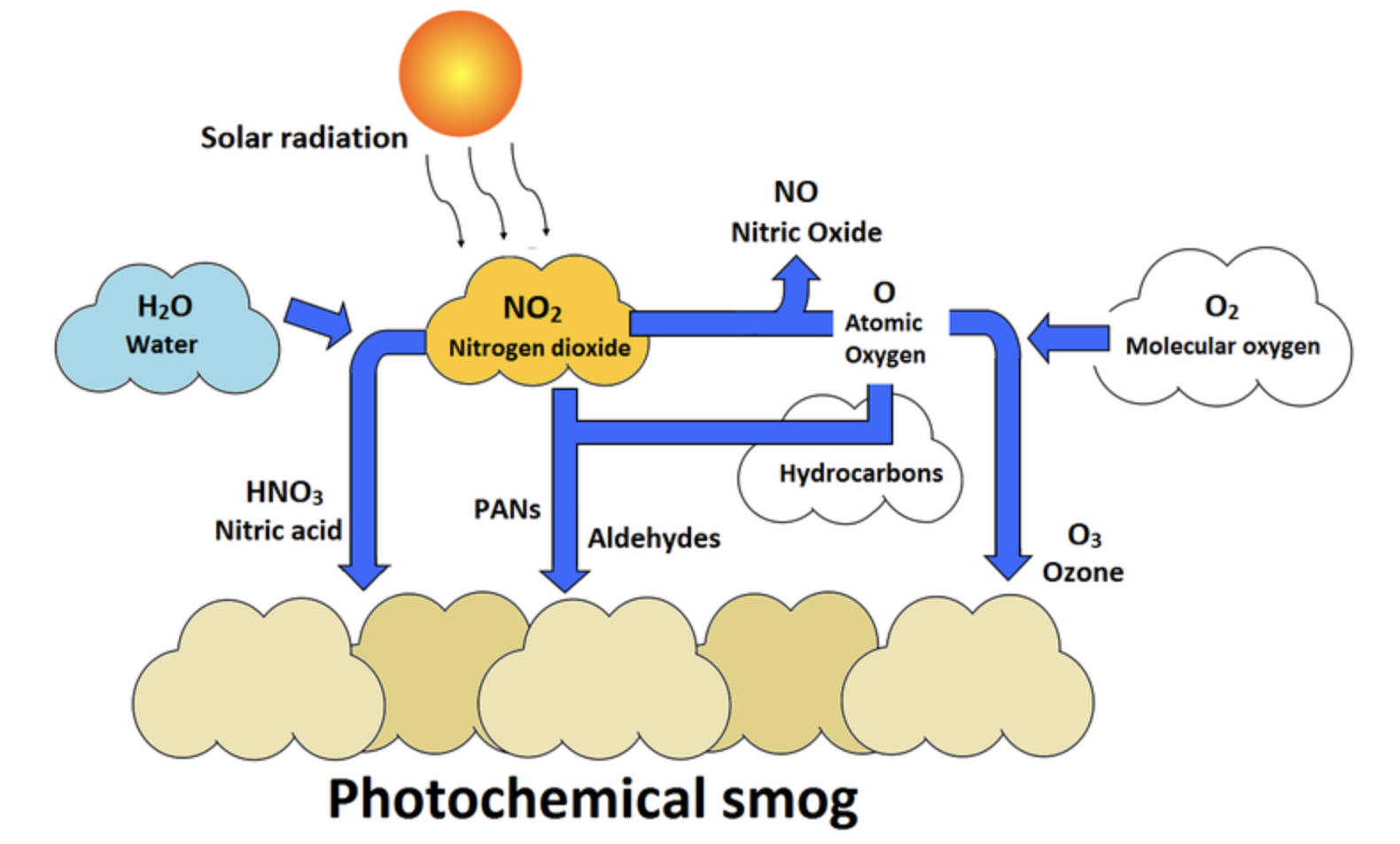
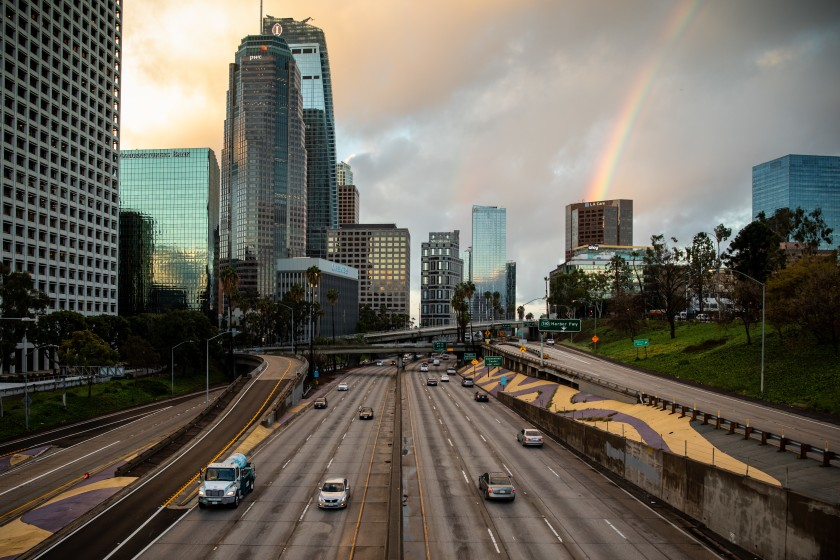
The Arctic Ozone Layer
Recently, there have been reports from NASA about changes in the ozone layer over the Arctic. The ozone layer sits in the stratosphere and is very important to the planet. Ozone consists of three oxygen atoms, and ozone molecules are highly reactive. Although just three oxygen atoms, these atoms block ultraviolet radiation. The ozone level should be well-maintained because ultraviolet radiation can cause skin cancer, eye cataracts, genetic, and immune problems. Oftentimes, Dobson units are used to measure ozone levels. Unfortunately in the Arctic, the ozone layer in the stratosphere has been damaged quite a lot. In recent years, it’s become worse due to global warming. However, the ozone levels in March were at around 205 Dobson. This is low compared to last year’s ozone levels at this time. Seasonally, an Arctic “hole” appears in our protective ozone layer. Chemicals called chlorofluorocarbons have been destroying the ozone layer in the Arctic for the past century, eventually causing the famous hole that formed in Antarctica in the 1980s. In 1987, over 175 countries agreed to stop using these chemicals.
Astonishingly, in the last days of April, scientists announced that the Arctic “hole” had healed, according to Copernicus Atmosphere Monitoring Service. Experts say that this “healing” is most probably due to reduced industrial activity as well as reduced travel via cars and planes, although there is still not enough information to make an accurate claim.

CO2 Emissions
Over the past decade, annual CO2 emissions have increased by 1% (excluding 2019). CO2 is important for the carbon cycle, especially to green plants. Green plants use CO2 to create glucose, which plants need for survival. But CO2 is also a greenhouse gas, this means that it contributes to global warming. When cars use fossil fuels to run them, CO2 or carbon dioxide, is released into the atmosphere. Even the slightest increase in CO2 causes the Earth to get warmer.
Since being told to stay in our homes, fewer cars roam the streets. Because of this, there has been a decline in CO2 emissions, which is beneficial to the environment in the sense that it helps fight against global warming. Recently, daily global CO2 emissions have fallen by an average of 17%, compared to the Spring of 2019.
Wild Animals Take Over
In some major cities, as people stay in their homes, animals have begun to explore areas that they were once too afraid to venture into. In some cities, wild animals have been seen on the streets. In Nara, Japan, about 100 deer were spotted walking in the city. Mountain goats were found walking on the streets in Llandudno, Wales because of the lack of people. There are also many other animals that are walking into the road such as boars, coyotes, alligators, hippos, and, in Chile, even pumas. Sadly, some animals who live in or near cities have grown dependent on humans as sources of food handouts. Fox News reported that hungry monkeys have been sighted fighting for food in the cities of Thailand and India. Hopefully, as lockdown restrictions begin to be eased, animals and humans can find away to peacefully co-exist in high population areas again.
Conclusion
We hope this article gives you good information on some of the recent changes in the environment. – Payton Suh and Allen Choi
Sources Used
https://www.gqmiddleeast.com/culture/is-the-coronavirus-lockdown-actually-healing-the-planet
https://www.cbsnews.com/news/arctic-ozone-hole-largest-closed/
https://www.foxnews.com/science/coronavirus-pandemic-wild-animals-walking-through-streets
https://www.nature.com/articles/s41558-020-0797-x
Read More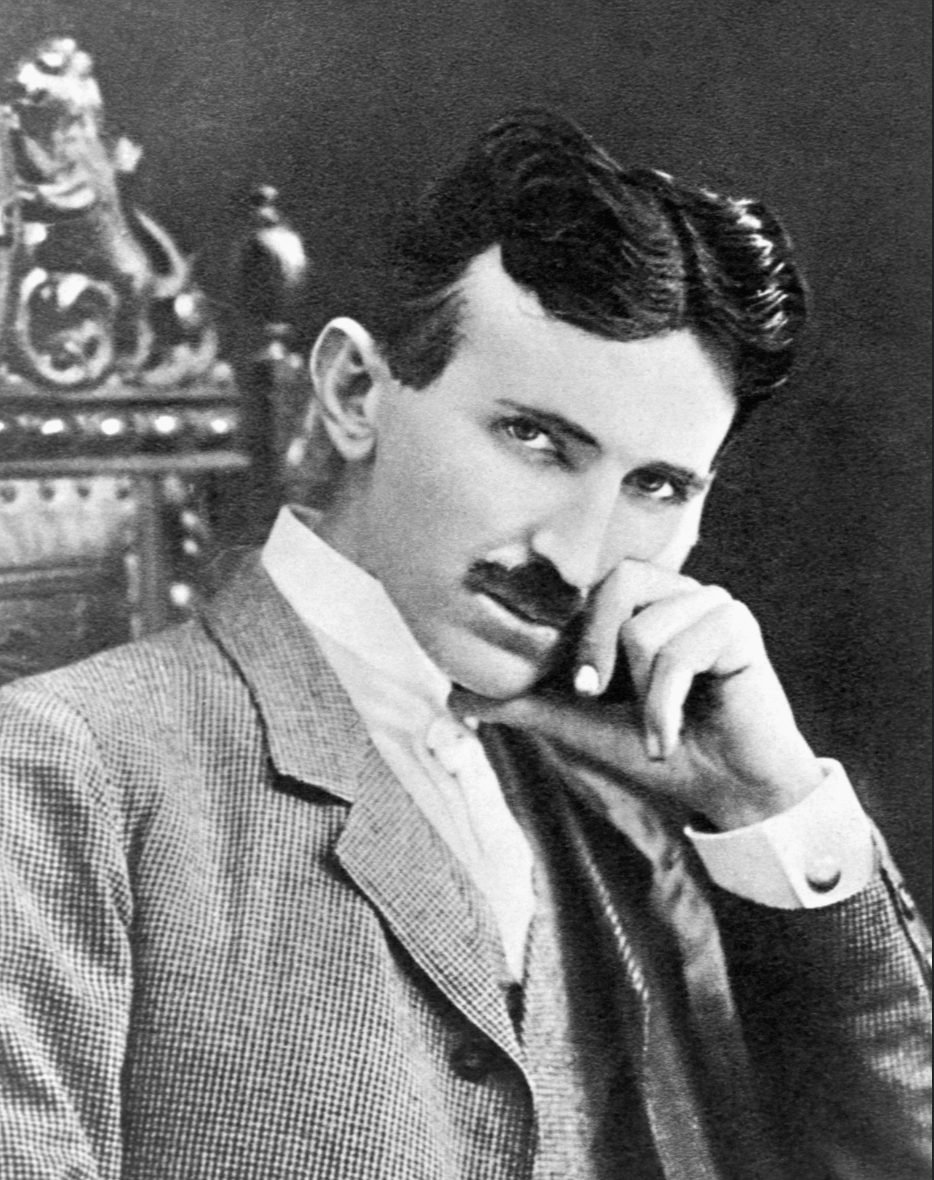
Nikola Tesla: The Genius Forgotten
Author: Shai Lang
How much do you know about the creator of remote control and alternate current motors? Many don’t realize how an unappreciated man such as Nikola Tesla could be so vital to the world of electricity. Tesla is well-known for his Tesla coil and alternate current (AC) motor. Even though many people know of Tesla’s achievements, they may not know that Tesla had an interesting upbringing, from his small and sometimes strange experiments to the bustling streets of New York. Along the way, Tesla learned and mastered very valuable life lessons. Tesla’s life full of curiosity in his childhood and young-adult life influenced his path to become a founding father of electricity because he was a visionary who used willpower and perseverance to brighten our world.
Tesla was a very frail and introverted boy in his small town in what is present-day Croatia. Although he was skinny, pale, and looked like he had lost a great deal of sleep, he would make up for it in his willpower. On top of that, Tesla was more susceptible to illness than a normal person would be. This quote from Tesla: Inventor of the Modern, Richard Munson explains Tesla’s battle and victory with malaria: “Tesla, in fact, was prone to disease, and he contracted malaria in the low and marshy Karlovac, which is positioned at the confluence of four rivers. Despite drinking enormous amounts of quinine, he suffered for months” (Munson 23). This quote shows Tesla’s willpower because malaria is a very hard infection to fight. This sense of willpower later helped Tesla stop himself from becoming lazy. For example, Tesla was very interested in playing pool and poker, sometimes spending a lot of his earnings on pool or poker. After a few weeks, he noticed his gambling was getting out of hand and completely stopped, no matter how much he loved it. Another example that describes Tesla’s willpower is when he gave up several habits that would take someone years to accomplish: “Tesla tempered several other habits and passions, too. Having been an obsessive smoker, burning fifteen or twenty big black cigars every day, he slowly realized the practice was damaging his health, so, according to Tesla, ‘my will asserted itself and I not only stopped but destroyed all inclination.’ He gave up coffee, worried that it was leading to heart trouble, although he confessed this particular discipline proved most difficult” (Munson 31). This shows Tesla’s willpower because habits such as smoking and drinking coffee are very hard to stop, much less stop longing for it. Giving up these habits led to Tesla living longer as he was prone to illness. It also gave him more time to work on his ideas. This would help Tesla later on in his life because he would be able to give up things that stopped him from making inventions.
Tesla was born during a very violent thunderstorm. The midwife was frightened, saying that Tesla would be “ a child of the storm” but his mother refused and said “No, of light.” What Tesla’s mother meant about him being a child of light is that he would persevere in everything he did to try to make the world a brighter place. A quote that best describes Tesla’s perseverance is when he discovers a way that he might be able to create a commutator-less motor:“‘I have solved the problem. Now I can die happy. But I must live. I must return to work and build the motor so I can give it to the world. No more will men be slaves to hard tasks. My motor will set them free. It will do the work of the world”’ (Munson 39). What Tesla is trying to create is known as a commutator-less motor. It is basically a motor that doesn’t flow electricity in a direct current but can alternate instead. This means that it can cover more distances and light up more houses with less motors. The fact that Tesla would even believe that this is possible shows Tesla’s perseverance because no matter where he was he was thinking of how he could accomplish his goal to build the motor. When Tesla discovered the motor, he was taking an evening stroll, reciting Goethe’s Faust and quickly drawing his idea in the dirt. This shows that no matter where Tesla was, it was all just the steps for him to accomplish his goal. Another quote that describes Tesla’s perseverance is when Tesla describes his AC motor to some of Edison’s engineers: “Tesla showed some Edison men his vision for an AC motor that utilized several alternating currents. ‘My idea,’ he said, ‘was that the more wires I used the more perfect would be the action of the motor.’ Yet the pragmatic and cost conscious Edison engineers scoffed at the scientist’s ideal, complaining copper wires were the most expensive part of an electrical distribution system; they wanted less, not more, wiring” (Munson 43). This shows that even though Tesla’s motor was deemed impossible by many, he still put every ounce of his effort into it. This later on helped Tesla to create other inventions. Tesla would not have invented remote control without his perseverance.
Tesla was also a visionary, being able to envision inventions in his head without putting them on paper or making a model out of them. A quote that describes Tesla’s ability to envision his projects is when he explains his process of inventing: “Later in life, he explained his creative process: ‘In my work, I first get a ‘feeling’ that there is a solution to a problem… then I think generally over the problems, not concentrating on any one point…Finally I close around on the idea, and the image that was at first blurred gets sharper and sharper–until in time it becomes a reality… I can give exact measurements to the workmen without having made even a sketch”’ (Munson 44-45). This shows Tesla’s use of his mind to envision all of his inventions because he clearly states that he doesn’t sketch a single thing on paper. To be able to have the brain capacity to do that and still safely go through daily life is quite incredible. This helped Tesla throughout his whole life because he could think of all of his inventions in his head without being worried that someone would copy his invention or that he would lose the plans for his invention. In the Britannica School article “Nikola Tesla” by Inez Whitaker Hunt, it shows Tesla’s visionary capabilities: “Tesla was a godsend to reporters who sought sensational copy but a problem to editors who were uncertain how seriously his futuristic prophecies should be regarded. Caustic criticism greeted his speculations concerning communication with other planets, his assertions that he could split the Earth like an apple, and his claim of having invented a death ray capable of destroying 10,000 airplanes at a distance of 400 km” (Hunt). Even though Tesla’s propositions seem far-fetched, his ability to come up with ways to back up his ideas were all the work of his mind being able to see visions. These futuristic prophecies made Tesla think of more intelligent life and even though people didn’t believe him back then, scientists still search the skies for signs of other lifeforms.
Because Tesla had willpower, persevered, and was a visionary, he could accomplish his goals for himself and the world. By accomplishing these goals, although becoming unappreciated, he made the world a brighter place both literally and figuratively. Because Tesla had willpower, he had the drive to continue his work and end his obsessive habits. By persevering, he was able to change the way electricity ran with his alternating current motor which used forces of nature that hadn’t been discovered yet. And with his uncanny ability to envision anything he wanted in his head with exact precision was incredibly useful in making sure that none of his work was copied or lost. In researching the life of Nikola Tesla, I have been inspired by his ability to get back up when knocked down. So many times he was pushed away because his designs were too costly, too risky, or too complicated, but no matter what he always reached his goal in the end. Without Tesla’s influence in the electrical world, the twenty-first century wouldn’t be as bright as it is today.
Tesla Coil:

Works Cited:
Munson, Richard. Tesla: Inventor of the Modern. W.W. Norton & Amp; Company, 2019.
Nikola Tesla Article: “Nikola Tesla.” Britannica School, Encyclopædia Britannica, 20 Mar. 2017. school.eb.com/levels/middle/article/Nikola-Tesla/71814#. Accessed 14 Apr. 2020
Read More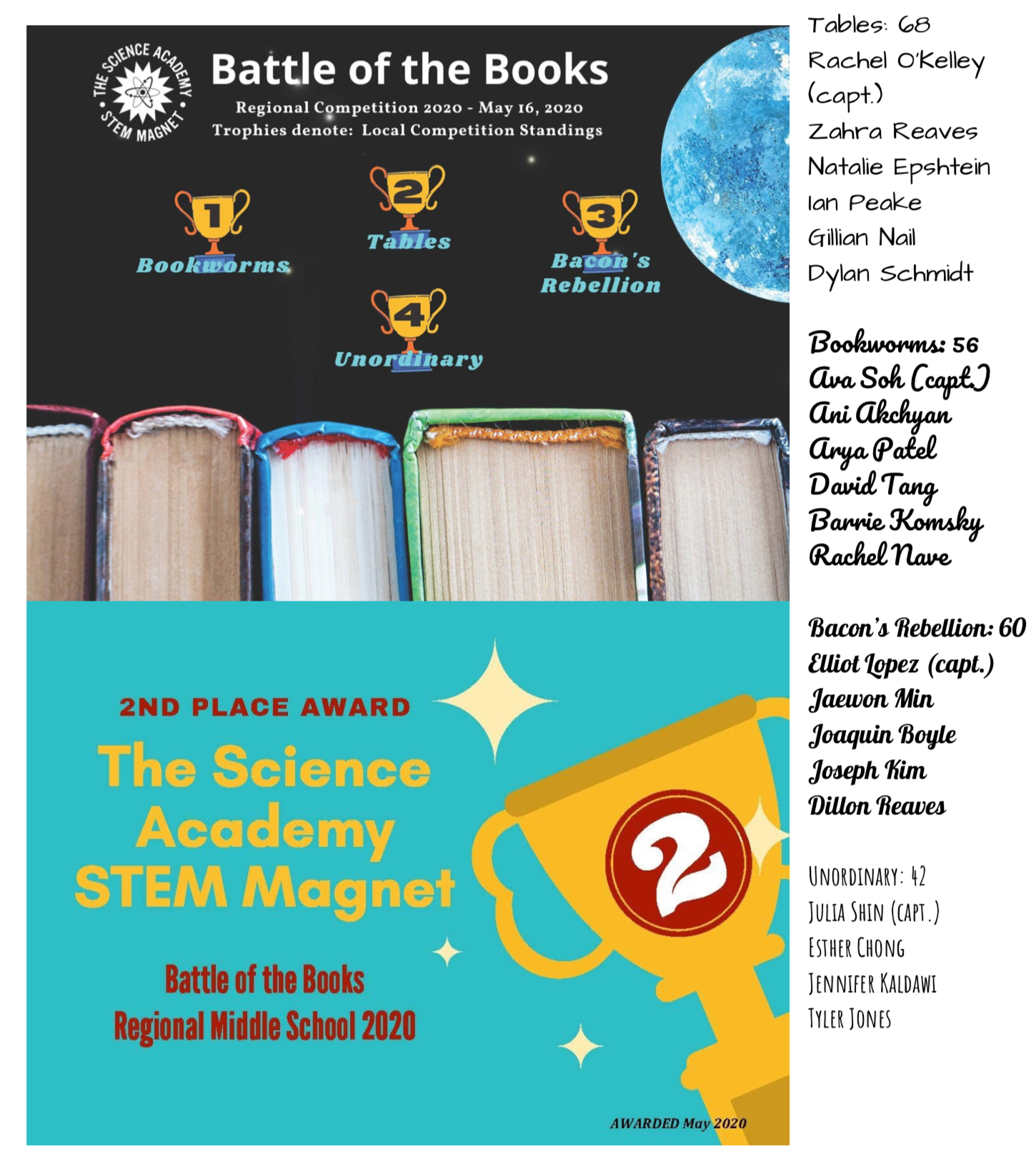
Science Academy Takes 2nd Place at Battle of the Books
Science Academy Team Takes 2nd Place at First-Ever Virtual Battle of the Books
by David Tang
On Saturday, May 16, 2020, the Science Academy STEM Magnet took part in their first Battle of the Books competition in our school’s history! The ranks in the image above represent their placing in the local competition, which took place at the Science Academy, competing with the other Academy teams. The scores represent points scored by each team at the regional competition which took place over Zoom. The scores of each team from each school were added and compared to the other schools. The Science Academy was second to Walter Reed; you may, however, be happy to know that we crushed Millikan Middle School.
For Battle of the Books, each team had to read all 20 books on the book list collectively. Typically, teams split up the titles between the members, but most of the Science Academy competitors read all 20 books. The book list included the first Harry Potter, Stargirl, Shadow and Bone, Amal Unbound, Esperanza Rising, Hoot, The Phantom Tollbooth, and Playing Atari with Sadaam Hussein. Together, teams have to answer questions about characters, events and details from any of the 20 books. Each question is phrased in the form of “In which book did…?” The team earns one point for naming the correct title. If they correctly name the title, they would then earn another point for the correct author. There were 40 questions (80 possible points), and each team competed separately. It took approximately 4 hours. Thank you so much to Ms. Garcia and Ms. Butler for working so hard and helping our teams prepare. It was a lot of work, but it really was also a lot of fun! Congratulations to all the team members!
Read More
A Guide To The Coronavirus: Origins, Genetics, Vaccine Testing and More
by Suren Grigorian
Following the recent outbreak of the novel coronavirus resulting in an increasing number of infected people, we are entering a new era filled with fearful projections of the future. A large majority of that fear appears to originate from fear of the unknown, specifically from the fact that among the individuals representing the statistical majority of the public, a small quantity possess actual knowledge of the scientific mechanisms responsible for the dissemination of the virus or what may remain attempted to halt the aforementioned spread. The fact that the mechanisms of the virus, to the general public, remain an opaque novelty is particularly dangerous, as ignorance fosters misinformation and misconceptions; thus, this article shall attempt to elucidate the fundamental principles behind the outbreak in a manner which, the author hopes, shall relieve a small quantity of the anxiety associated with this event, an event which has effected great change upon the lives of us and our relatives.
For an individual to understand the fundamentals of the outbreak, it first remains necessary to understand the virus itself. The virus, currently designated as the Severe Acute Respiratory Disease Coronavirus 2 or SARS-CoV-2 via scientists, primarily remains classified as a member of the family Coronaviridae; generally named for their appearance, similar to a crown beneath an electron microscope. Coronaviruses remain associated with numerous mild illnesses affecting the upper respiratory tract, including the common cold, a small fraction of which remains attributed to them. However, 3 viruses within this family, with the inclusion of SARS-CoV-2, remain attributed to severe respiratory diseases. The origins of the current virus remain slightly obscure, though the development of the virus allows for the delineation of its development. According to current scientific research, the genetic composition of the virus resembles the genetic composition of coronaviruses prevalent among bat species; however, additional evidence links the proteins upon the surface of the virus (discussed in additional detail further onwards) to pangolins, with the former remaining a particularly plausible explanation. Though the origins of the virus do not remain certain, a recent scientific statement within The Lancet regarding the danger of virus conspiracy theories cites papers analysing its genetic composition. One such paper concludes that the coronavirus possesses an approximate 88% similarity to 2 bat coronaviruses, providing general evidence that the virus remains of natural origin.
With a generalised scientific outline of the taxonomy and epidemiological history of the virus established, one can proceed to the biological components of the virus within its generality. To establish the fundamental biology of the virus, one must begin with its typology. The novel coronavirus remains classified as a positive-sense single-stranded RNA virus; the virus itself possesses an approximate width of 90 nanometres, while 4 varying proteins remain contained within the virus, in addition to the previously referenced genetic material. The virion primarily remains distinguished as a mammalian virus due to its external phospholipid membrane; such a membrane, primarily constructed from the external plasma membrane of the cells which the virus infects, assists within entry. The genetic material of the virus primarily contains approximately 29,900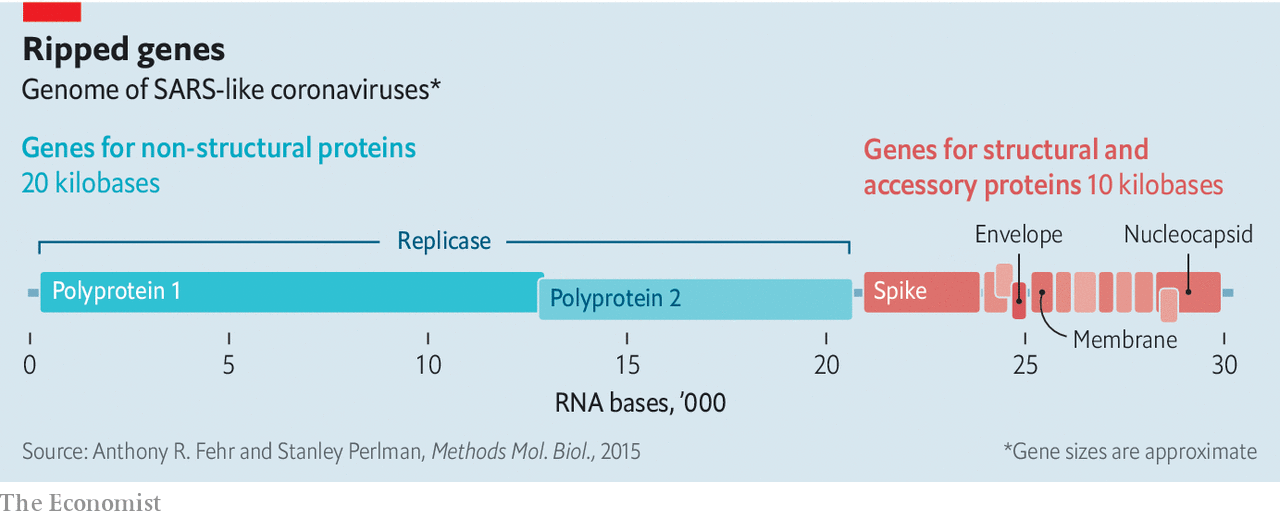 nucleotides, a miniscule quantity in comparison to the gene sizes known to us today, but massive for the large majority of RNA viruses. The internal components of the genetic material of the virus determine the process of infection. 20,000 RNA bases, 20 kilobases within the virus, remain devoted to replicase genes, responsible for the construction of polyproteins, which remain divided into non-structural proteins. An additional 10 kilobases remain devoted to essential and accessory proteins, including the spike, envelope, nucleocapsid and membrane proteins. However, the large majority of scientific discussion concerns the membrane of the virus; here, the key to entry within a cell remains located.
nucleotides, a miniscule quantity in comparison to the gene sizes known to us today, but massive for the large majority of RNA viruses. The internal components of the genetic material of the virus determine the process of infection. 20,000 RNA bases, 20 kilobases within the virus, remain devoted to replicase genes, responsible for the construction of polyproteins, which remain divided into non-structural proteins. An additional 10 kilobases remain devoted to essential and accessory proteins, including the spike, envelope, nucleocapsid and membrane proteins. However, the large majority of scientific discussion concerns the membrane of the virus; here, the key to entry within a cell remains located.
ACE2, scientifically known as Angiotensin I Converting Enzyme 2, remains established as a protein receptor upon the surface of human cells responsible for regulation of cardiovascular and renal metabolism. However, it serves as a binding protein receptor to the spike proteins of SARS-CoV-2, forming a primary and crucial component of the entry of the virus into a healthy cell. An additional factor responsible for assisting the entry of the virus into the archetypal cell remains the serine protease TMPRSS2, responsible for assisting within S protein priming. The function of this remains the splicing of the aforementioned spike protein, producing a fusion peptide and allowing finalisation of entry. The surface of the virus additionally possesses such receptors as hemagglutinin esterase; however, this does not remain particularly applicable to the mechanisms via which the virus remains responsible for infecting human cells.
However, an essential component of the general effect of the virus upon the human body remains the entry of a singular virus within a singular human cell. This occurs via a detailed biological process responsible for general infection. Firstly, the spike protein receptors upon the surface of the virus attach to the ACE2 receptors upon the surface of the human cell (As previously referenced, the serine protease TMPRSS2 splices the spike protein, producing a fusion peptide and allowing entry). Following this, a series of processes occur which allow for the replication of the simplified genetic material of the cell via the utilisation of replicase enzymes which exist within the cell itself; a set of pp1a and pp1b polyproteins remain produced, primarily responsible for the formation of a replicase-transcriptase complex, which manufactures replicated RNA segments. As viral proteins remain manufactured and assemble concomitantly to the proteins comprising the viral body, exocytosis occurs, releasing additional viruses into the interstitial fluid of the body and producing the incipient entrance instances of a viral infection within the body. The spike proteins which mediate these processes within viruses (including the virus responsible for the SARS outbreak within the early 2000s) and those within the coronavirus remain generally similar.
Though individual mechanisms of infection remain a component of the damage produced via the virus, its general effects upon the body and its methodology of attack remain an additional component. Analysis of this requires a general understanding of the immune system. A singular component of the mechanism utilised via the coronavirus to conduct a total bodily infection remains the offensive upon the human lungs. Following infection, virions enter the alveoli of the lungs, the primary centre for respiration and the general absorption of oxygen from atmospheric substances. With the virus inflicting severe damage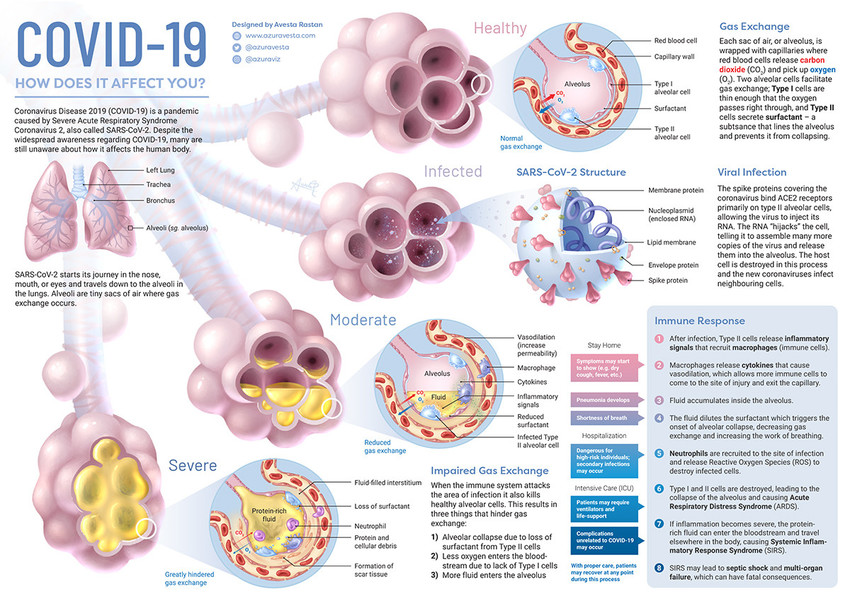 upon the cells of the alveoli, leukocytes within the blood attempt to halt the damage, with the immune system producing an excessive reaction known as a cytokine storm. Within the worst instances, the walls of the alveoli collapse, producing acute respiratory distress syndrome. Acute respiratory distress syndrome remains defined as a respiratory disorder within which fluid from capillaries within the alveoli begins to leak, producing decreased quantities of oxygen within the blood stream and a condition known as hypoxemia. Following this, severe organ damage occurs, with potential sepsis resulting from immune system activity and producing a possibility of death. The final stage within the dissemination of the virus remains its spread to additional individuals. This primarily occurs via a system of release which necessitates the utilisation of masks; according to the Centers for Disease Control and Prevention, the virus primarily remains released via infectious droplets of saliva or mucus, producing infections within additional individuals.
upon the cells of the alveoli, leukocytes within the blood attempt to halt the damage, with the immune system producing an excessive reaction known as a cytokine storm. Within the worst instances, the walls of the alveoli collapse, producing acute respiratory distress syndrome. Acute respiratory distress syndrome remains defined as a respiratory disorder within which fluid from capillaries within the alveoli begins to leak, producing decreased quantities of oxygen within the blood stream and a condition known as hypoxemia. Following this, severe organ damage occurs, with potential sepsis resulting from immune system activity and producing a possibility of death. The final stage within the dissemination of the virus remains its spread to additional individuals. This primarily occurs via a system of release which necessitates the utilisation of masks; according to the Centers for Disease Control and Prevention, the virus primarily remains released via infectious droplets of saliva or mucus, producing infections within additional individuals.
However, to produce a general understanding of the methodologies necessary for the development of an epidemic and an eventual pandemic, one must understand the mathematics of epidemiological dissemination; in particular, the development of the coronavirus remains reliant upon exponential growth. In particular, the general model utilised via epidemiologists remains the SIR model, additionally known as the susceptible, infected and recovered model, with the addition of exposed individuals. Utilisation of this model requires the application of Rₒ, the quantity of individuals which may remain infected as a fraction of the quantity who contact an infected individual. Following the progression of an epidemic, epidemiologists adjust this in association with variations within the progression of the pandemic, though the Rₒ of the virus remains 3. The mathematics of the development of the pandemic ultimately remain dependent upon this; the development of the epidemic, however, progresses beyond simple transmission models.
One could primarily characterise the development of the pandemic within an SIR model via a formula within which the change within the quantity of cases per day, perhaps represented as ΔC, remains equivalent to the quantity of individuals exposed each day, multiplied via the quantity of existing cases, multiplied via the probability of contracting the virus provided an instance of contact. When one utilises such a model, it remains effortless to note that at a particular point within the outbreak, all individuals within the population will remain infected and the virus will remain incapable of disseminating further. The question remains if the outbreak remains capable of infecting all individuals within the population, a definitively avoidable outcome; if this occurs, one could expect to
change within the quantity of cases per day, perhaps represented as ΔC, remains equivalent to the quantity of individuals exposed each day, multiplied via the quantity of existing cases, multiplied via the probability of contracting the virus provided an instance of contact. When one utilises such a model, it remains effortless to note that at a particular point within the outbreak, all individuals within the population will remain infected and the virus will remain incapable of disseminating further. The question remains if the outbreak remains capable of infecting all individuals within the population, a definitively avoidable outcome; if this occurs, one could expect to observe exponential growth within an outbreak, decaying following a period of time. However, epidemics tend to follow, with the occurrence of restrictions, logistic growth, a mathematical methodology of growth whereby a function continues within a stage of exponential
observe exponential growth within an outbreak, decaying following a period of time. However, epidemics tend to follow, with the occurrence of restrictions, logistic growth, a mathematical methodology of growth whereby a function continues within a stage of exponential
growth for a period of time, following which, at the inflection point, the derivative of the function begins to decrease, within a bell curve pattern. Following this, the development of the epidemic remains drastically reduced, culminating within a flatline, where the quantity of additional cases remains particularly small. In fact, if one plots the derivative of the resulting function, known as the sigmoid function, the derivative intersects the Y-axis at precisely 50% of the value at which the sigmoid intersects; this indicates that the inflection point for the sigmoid function and thus, the point at which the dissemination of the disease begins to halt, occurs at the point within which the derivative attains its largest value.
Though this aspect of the outbreak possesses relevance, a particularly primary aspect remains the history of the outbreak; within weeks of its development, the entirety of the developed world screeched to a halt, industrially, commercially and governmentally. How did this occur? Beginning with the outbreak itself, one could analyse the development of the outbreak from its inception; on November 17, 2019, according to Chinese officials and the South China Morning Post, an individual, 55 years of age, became the first recorded case worldwide of the virus. During the previous year, approximately 266 individuals placed within medical surveillance remained registered; however, the extent of the outbreak became clear to Chinese Communist Party officials upon December 31, when government officials within the province of Hubei announced that several dozen individuals remained within treatment for a novel infectious virus, as of yet unknown to the scientific community. Upon January 11, the Chinese government reported the first death from the novel disease, a man of 61 years who purchased materials from the wet market where the virus remains suspected to have begun; the death occurred upon January 9, when the man, admitted to a medical facility for treatment, failed to recover and died of heart failure. Following this, the first confirmed cases were reported within external nations, as within the following days, Thailand, South Korea and Japan reported cases; upon January 21, the first case within the United States was reported, with a man of 30 years developing symptoms following his return from Wuhan.
Upon January 23, Chinese government officials ordered the immediate placement of the city of Wuhan and the province of Hubei within lockdown, prior to the Chinese Lunar New Year. At this point, approximately 570 individuals remained infected, with approximately 17 dead. The remainder of the nation experienced increased lockdown measures, with Lunar New Year celebrations cancelled. Upon February 2, 3 days following the WHO declaration regarding the coronavirus as an emergency of international concern, China reported approximately 14,380 cases. As the nation of China remained placed within severe lockdown, precautions began within additional nations; several governments imposed testing upon all entering flights and their passengers. Several days prior, human-to-human transmission remained conclusively located, massively increasing the urgency of global preparations. Upon February 9, approximately 37,198 cases remained recorded, with noted Chinese whistleblower Dr. Li Wenliang dying of the disease upon February 7.
On February 14, France became the first nation within Europe to report a death resulting from the novel virus, with Italy reporting 3 deaths upon February 23 and local government officials halting the Venice Carnival, an event which, were it to continue upon its charted schedule, could produce hundreds or perhaps thousands of additional infections. From February 24 to March 1, a wave of incipient cases occurred, with nations such as the Netherlands, Greece, Georgia, Denmark and numerous contemporaries reporting initial cases. With cases exiting the quarantined and docked Diamond Princess cruise ship, upon February 27, the United States government began to consider the implementation of the Defense Production Act, which would grant President Trump the ability to control national production facilities within emergency situations. The first death within the United States occurred upon February 29, with President Trump disrupting travel from Europe upon March 11 and declaring a national emergency upon March 13. Gathering within groups of 50 or greater was promptly chastised via the Centers for Disease Control and Prevention and upon March 15, the New York school system, the largest within the United States, closed. Though the European Union, facing increasing infections, restricted non-essential travel into the bloc, 2 days following the announcement, upon March 19, China reported 0 local infections, with 14 resulting from external travel and approximately 80,967 infections total; the first nation to experience an immediate halt to the continuation of the virus, China reported positive results primarily due to their brutal quarantine measures.
Upon March 30, an influx of state isolation directives remained issued within the United States, with approximately 265 million Americans placed within isolation. Earlier, upon March 13, the Los Angeles Unified School District, the second largest within the United States, announced a 2-week closure, extended first to May 1 and, following the initial announcement, to the terminal end of the school year. As the outbreak continued, numerous additional events began to contribute to its dissemination, with cases surging within Russia, deaths increasing within Iran and Italy and the United States assuming the mantle of the nation with the largest recorded quantity of coronavirus cases upon the planet. `Russia now possesses approximately 300,000 cases, an issue compounded via the manipulation of statistics due to bureaucratic machinations. And thus, our story returns to today.
With this immense quantity of suffering and death, as well as economic difficulties for millions of Americans and global citizens, one would naturally wonder: does there remain a cure? Scientists, researchers and pharmaceutical specialists across the world are labouring to locate a cure; so far, 7 promising treatments remain within clinical trials, according to The Economist. A promising option, one which I am sure our readers have observed within televised media, remains remdesivir, a treatment originally developed via Gilead Sciences, a prominent American pharmaceutical corporation. As a nucleoside analogue, a treatment which mirrors the chemical structure of genetic material, the efficacy of remdesivir primarily remains attributed to its ability to prevent genetic replication. In addition to 2 trials within Asia developed via Gilead Sciences, the chemical remains authorised for emergency clinical utilisation within the United States, with supplies allocated to hospitals within multiple states. However, though promising, it does not halt the effects of the virus totally, with several researchers insisting it possesses a minor effect and a previously cited Chinese study within this article additionally supplementing this view.
If not remdesivir, then what? Trials of the clinical cocktail Lopinavir-Ritonavir, commercially known as Kaletra, remain within progress or completed. However, as within the case of a study published within the New England Journal of Medicine, they do not necessarily deliver promising results, with an additional study published within The Lancet indicating that triple antiviral therapy performed superiorly to Kaletra. Perhaps favipiravir, known as Avigan, then; this appears to remain the case, as the Russian government, in association with domestic pharmaceutical groups, indicated that a trial of the treatment remains near completion, displaying greater than 80% efficacy. Tocilizumab, known as Actemra commercially, remains an additional option; approved for utilisation within China and sparingly utilised within Italy, it prevents inflammatory responses such as the referenced cytokine storm within its standard application as an arthritis drug.
As for vaccines, numerous varying methodologies exist for the development of vaccines to combat the virus. These include live vaccines, viral vector vaccines, nucleic acid vaccines, protein-based vaccines and additional types. Within a live vaccine, a weakened or destroyed version of the virus, with spike proteins intact, remains introduced within the body, allowing for immediate recognition via the immune system and the development of immunity. The American biotechnology corporation Codagenix, within collaboration with the Serum Institute of India, currently remains within the process of developing a deactivated live vaccine. Viral vector vaccines, additionally known as recombinant vector vaccines, utilise the process of genetic modification to introduce relevant spike protein genome sections within the genomes of varying viruses, such as adenoviruses, an approach pursued via Johnson & Johnson and CanSino, the latter of which possesses a Phase II vaccine. Nucleic acid vaccines, a novel and untested development within the field, primarily remain reliant upon recent advances within genetic engineering, whereby the coronavirus spike peptide gene, in addition to a quantity of DNA, remains subjected to electroporation, developing membrane pores to increase acceptance and allowing for the production of spike proteins, triggering an immune response. This remains within Phase I trials under the guidance of Beijing Advaccine Biotechnology Inovio Pharmaceuticals as a DNA vaccine and an RNA vaccine under Moderna and CureVac, the latter of which aims to “print” such components. Protein-based vaccines primarily insert large quantities of independent antigens, triggering an individual immune response; this remains pursued via Clover Pharmaceuticals, Novovax, the notable Sanofi Pasteur and the United States military, among others. With such entities as Oxford University, the US government and Chinese state apparatus developing vaccines, there remains a slight quantity of hope. However, solutions remain within the distant intervals of several months onward.
utilise the process of genetic modification to introduce relevant spike protein genome sections within the genomes of varying viruses, such as adenoviruses, an approach pursued via Johnson & Johnson and CanSino, the latter of which possesses a Phase II vaccine. Nucleic acid vaccines, a novel and untested development within the field, primarily remain reliant upon recent advances within genetic engineering, whereby the coronavirus spike peptide gene, in addition to a quantity of DNA, remains subjected to electroporation, developing membrane pores to increase acceptance and allowing for the production of spike proteins, triggering an immune response. This remains within Phase I trials under the guidance of Beijing Advaccine Biotechnology Inovio Pharmaceuticals as a DNA vaccine and an RNA vaccine under Moderna and CureVac, the latter of which aims to “print” such components. Protein-based vaccines primarily insert large quantities of independent antigens, triggering an individual immune response; this remains pursued via Clover Pharmaceuticals, Novovax, the notable Sanofi Pasteur and the United States military, among others. With such entities as Oxford University, the US government and Chinese state apparatus developing vaccines, there remains a slight quantity of hope. However, solutions remain within the distant intervals of several months onward.
In conclusion, the author hopes that this analysis of the individual components of the worldwide coronavirus outbreak shall provide a sufficient quantity of comfort to those who are subjected to the jarring reality we face today. Hopefully, this virus shall be eradicated, but for now, our thoughts and hopes remain both with the relatives of those lost to the outbreak and to the researchers attempting to develop a cure.
References:
- National Institute of Allergy and Infectious Diseases. (n.d.). Coronaviruses. Retrieved April 27, 2020, from https://www.niaid.nih.gov/diseases-conditions/coronaviruses
- Bryner, J. (2020, April 10). 6 new coronaviruses discovered in bats. Retrieved April 27, 2020, from https://www.livescience.com/6-new-coronaviruses-found-bats.html
- Collins, F., & National Institutes of Health. (2020, March 26). Genomic Study Points to Natural Origin of COVID-19. Retrieved April 27, 2020, from https://directorsblog.nih.gov/2020/03/26/genomic-research-points-to-natural-origin-of-covid-19/
- Lu, R., Zhao, X., Li, J., Niu, P., Yang, B., Wu, H., … Tan, W. (2020). Genomic characterisation and epidemiology of 2019 novel coronavirus: implications for virus origins and receptor binding. The Lancet, 395(10224), 565–574. https://doi.org/10.1016/s0140-6736(20)30251-8
- The Economist. (2020, March 16). Understanding SARS-CoV-2 and the drugs that might lessen its power. The Economist. Retrieved from https://www.economist.com
- Fehr, A. R., & Perlman, S. (2015). Coronaviruses: An Overview of Their Replication and Pathogenesis. Coronaviruses, 1–23. https://doi.org/10.1007/978-1-4939-2438-7_1
- Hoffmann, M., Kleine-Weber, H., Schroeder, S., Krüger, N., Herrler, T., Erichsen, S., … Pöhlmann, S. (2020). SARS-CoV-2 Cell Entry Depends on ACE2 and TMPRSS2 and Is Blocked by a Clinically Proven Protease Inhibitor. Cell, 181(2), 271-280.e8. https://doi.org/10.1016/j.cell.2020.02.052
- Klausegger, A., Strobl, B., Regl, G., Kaser, A., Luytjes, W., & Vlasak, R. (1999). Identification of a Coronavirus Hemagglutinin-Esterase with a Substrate Specificity Different from Those of Influenza C Virus and Bovine Coronavirus. Journal of Virology, 73(5), 3737–3743. https://doi.org/10.1128/jvi.73.5.3737-3743.1999
- Song, Z., Xu, Y., Bao, L., Zhang, L., Yu, P., Qu, Y., … Qin, C. (2019). From SARS to MERS, Thrusting Coronaviruses into the Spotlight. Viruses, 11(1), 59. https://doi.org/10.3390/v11010059
- Oh, J., & Klivans, L. (2020, May 5). How The Novel Coronavirus Hijacks Our Defenses. Retrieved May 24, 2020, from https://choice.npr.org/index.html?origin=https://www.npr.org/sections/health-shots/2020/05/05/850361325/video-how-the-novel-coronavirus-hijacks-our-defenses
- American Lung Association. (2020, March 24). Learn About ARDS. Retrieved May 24, 2020, from https://www.lung.org/lung-health-diseases/lung-disease-lookup/ards/learn-about-ards
- Centers for Disease Control and Prevention. (n.d.). Food Safety and Coronavirus Disease 2019 (COVID-19) | CDC. Retrieved May 24, 2020, from https://www.cdc.gov/foodsafety/newsletter/food-safety-and-Coronavirus.html
- Rogers, A. (2020, March 30). The Mathematics of Predicting the Course of the Coronavirus. Wired. Retrieved from https://www.wired.com
- Gallagher, J. (2020, May 18). Coronavirus: What is the R number and how is it calculated? Retrieved May 24, 2020, from https://www.bbc.co.uk/news/health-52473523?utm_source=rss&utm_medium=Sendible&utm_campaign=RSS
- Ma, J. (2020). Estimating epidemic exponential growth rate and basic reproduction number. Infectious Disease Modelling, 5, 129–141. https://doi.org/10.1016/j.idm.2019.12.009
- Derivative of the Sigmoid function. (2018, July 7). Retrieved May 25, 2020, from https://towardsdatascience.com/derivative-of-the-sigmoid-function-536880cf918e
- Ma, J. (2020, March 14). Coronavirus: China’s first confirmed Covid-19 case traced back to November 17. South China Morning Post. Retrieved from https://www.scmp.com
- Taylor, D. B. (2020, May 25). How the Coronavirus Pandemic Unfolded: a Timeline. The New York Times. Retrieved from https://www.nytimes.com
- Al Jazeera. (2020, May 25). Timeline: How the new coronavirus spread. Retrieved May 25, 2020, from https://www.aljazeera.com/news/2020/01/timeline-china-coronavirus-spread-200126061554884.html
- Qin, A. (2020, January 24). Wuhan, Center of Coronavirus Outbreak, Is Being Cut Off by Chinese Authorities. The New York Times. Retrieved from https://www.nytimes.com
- Graham-Harrison, E. (2020, March 19). China’s coronavirus lockdown strategy: brutal but effective. The Guardian. Retrieved from https://www.theguardian.com
- LAist. (2020, March 13). LAUSD Cancels In-Person Classes For 2 Weeks, Sending Half A Million Kids Home. Retrieved May 26, 2020, from https://laist.com/latest/post/20200313/lausd-schools-shutdown-coronavirus
- (2020b, May 21). Anatomy of lies: Russia’s covid-19 outbreak is far worse than the Kremlin admits. The Economist. Retrieved from https://www.economist.com
- Understanding SARS-CoV-2 and the drugs that might lessen its power. (2020, March 16). The Economist. Retrieved from https://www.economist.com
- Wang, Y., Zhang, D., Du, G., Du, R., Zhao, J., Jin, Y., … Wang, C. (2020). Remdesivir in adults with severe COVID-19: a randomised, double-blind, placebo-controlled, multicentre trial. The Lancet, 395(10236), 1569–1578. https://doi.org/10.1016/s0140-6736(20)31022-9
- Lerner, S. (2020, May 26). Despite the hype, Gilead’s Remdesivir Will do Nothing to end the Coronavirus Pandemic. Retrieved May 26, 2020, from https://theintercept.com/2020/05/26/coronavirus-gileand-remdesivir-treatment/
- Cao, B., Wang, Y., Wen, D., Liu, W., Wang, J., Fan, G., … Wang, C. (2020). A Trial of Lopinavir–Ritonavir in Adults Hospitalized with Severe Covid-19. New England Journal of Medicine, 382(19), 1787–1799. https://doi.org/10.1056/nejmoa2001282
- The Pharma Letter. (2020, May 22). Latest data show above 80% efficacy for favipiravir in COVID-19, say RDIF and ChemRar. Retrieved May 26, 2020, from https://www.thepharmaletter.com/article/latest-data-show-above-80-efficacy-for-favipiravir-in-covid-19-say-rdif-and-chemrar
- LaFee, S. (2020, April 29). Arthritis Drug Presents Promise as Treatment for COVID-19 Pneumonia. Retrieved May 26, 2020, from https://health.ucsd.edu/news/releases/Pages/2020-04-29-arthritis-drug-presents-promise-as-treatment-for-covid-19-pneumonia.aspx
- Nature Editorial. (2020, April 28). The race for coronavirus vaccines: a graphical guide. Nature. Retrieved from https://www.nature.com
Read More




